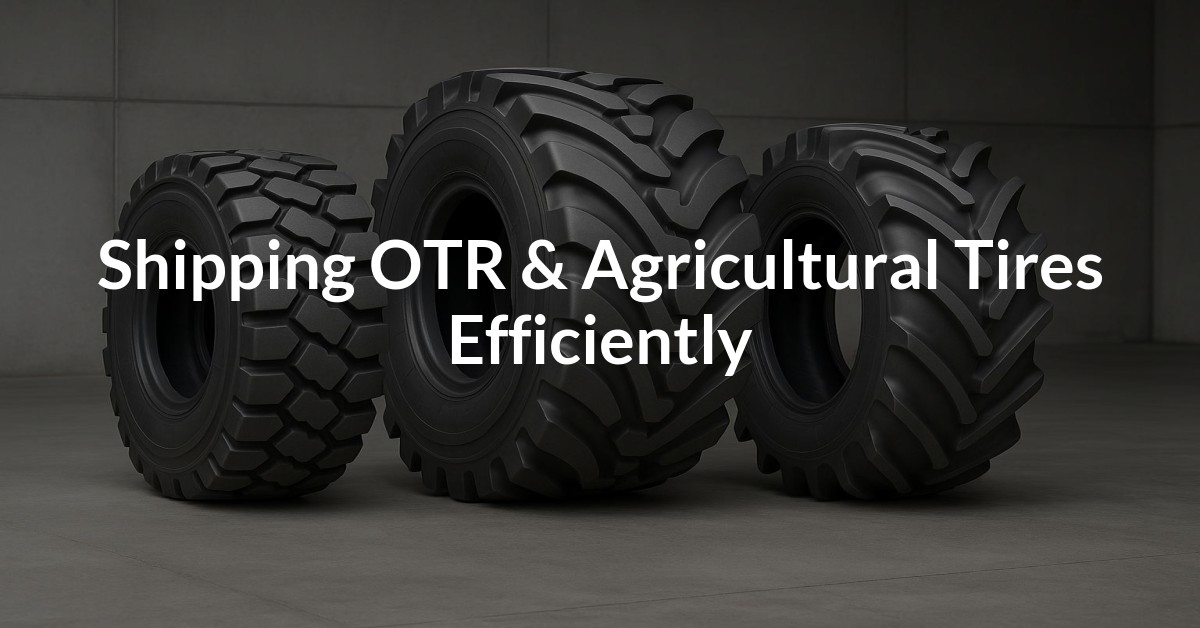Transporting cranes is a complex endeavor that demands meticulous planning, specialized equipment, and a profound understanding of logistics. At Freight SideKick, we specialize in ensuring your crane shipments are handled efficiently and cost-effectively. Whether relocating a crane to a new job site or delivering it to a client, our expertise in freight brokerage helps streamline the process. This guide delves into the intricacies of crane shipping, covering crane anatomy, transportation challenges, load planning and configuration, onsite services, solutions for capacity aggregation in the spot market, and cost-saving strategies.
Freight SideKick's Expertise in Crane Shipping
At Freight SideKick, we leverage our expansive network of carriers and logistics expertise to provide tailored solutions for your crane transport needs. Our brokerage services allow us to find the best available equipment and routes to maximize efficiency while minimizing costs.
Understanding Crane Anatomy
A thorough grasp of a crane's components is essential for effective transportation planning. Key parts include:
- Boom: The long, telescopic or fixed arm used to move objects. Also known as the jib in certain contexts.
- Jib: An extension of the boom that allows for additional reach. Sometimes referred to as the fly jib.
- Counterweights: Weights added to the crane's rear to balance the load and prevent tipping.
- Operator's Cab: The area where the operator controls the crane's movements. Also called the cab.
- Hoist: The mechanism that lifts and lowers the load.
- Hook: The device used to grab and hold the load.
- Outriggers: Extendable legs that provide additional stability during operations.
- Superstructure: The rotating part of the crane above the carrier, which includes the boom, cab, and counterweights. Also known as the upperworks.
- Undercarriage: The base structure on which the crane operates, including the tracks or wheels.
Understanding these components aids in determining the best methods for disassembly, loading, and securing during transport. Freight SideKick ensures that every aspect of your crane’s anatomy is accounted for when planning transport.
Challenges in Crane Transportation
Transporting cranes presents several challenges:
- Size and Weight: Cranes are often oversized and heavy, necessitating specialized trailers and adherence to strict weight regulations.
- Disassembly Requirements: To comply with transportation regulations, cranes may need partial disassembly, requiring skilled personnel for both disassembly and reassembly.
- Route Planning: Identifying routes that can accommodate oversized loads is crucial to avoid obstacles like low bridges or weight-restricted roads.
- Permitting: Securing the necessary permits for oversized loads can be time-consuming and varies by jurisdiction.
Freight SideKick navigates these challenges with precision, ensuring all regulatory and logistical requirements are met.
Load Planning and Configuration
- Weight Distribution: Even weight distribution prevents undue stress on specific points, reducing the risk of damage.
- Dimensional Analysis: Accurately measuring the crane’s dimensions ensures compliance with transportation regulations and helps in selecting the appropriate trailer type.
- Center of Gravity: Identifying the crane’s center of gravity is essential for stability during transport.
- Securing Mechanisms: Utilizing appropriate securing devices, such as chains, binders, and straps, ensures the crane remains stationary during transit.
- Disassembly Strategy: Determining which parts of the crane can be disassembled to reduce size and weight leads to significant cost savings.
With Freight SideKick’s expertise, strategic load planning can save thousands or even tens of thousands of dollars.
Onsite Services
- Site Assessment: Evaluating the loading area to identify potential obstacles and determine the best approach.
- Rigging Coordination: Working closely with rigging teams to ensure the crane is properly prepared for transport.
- Safety Protocols: Implementing safety measures to protect personnel and equipment during the loading process.
- Equipment Provision: Supplying necessary equipment, such as cranes or forklifts, to assist in the loading process.
Solutions for Capacity Aggregation in the Spot Market
- Leveraging a Network of Carriers: Utilizing a broad network of carriers to increase the likelihood of finding available equipment and drivers suited for crane transport.
- Real-Time Load Matching: Employing technology to match available loads with carriers in real-time enhances efficiency and reduces downtime.
- Flexible Scheduling: Being flexible with pickup and delivery times opens up more options in the spot market, potentially leading to cost savings.
Conclusion
Shipping cranes with Freight SideKick is a streamlined, cost-effective, and efficient process. By understanding crane anatomy, anticipating transportation challenges, implementing effective load planning and configuration, providing onsite services, leveraging capacity in the spot market, and applying cost-saving measures, Freight SideKick ensures a successful crane transport operation every time.
Personalized Assistance
For personalized assistance with your freight transportation, Get a quote today, call 877-345-3838, or email support@freightsidekick.com.











